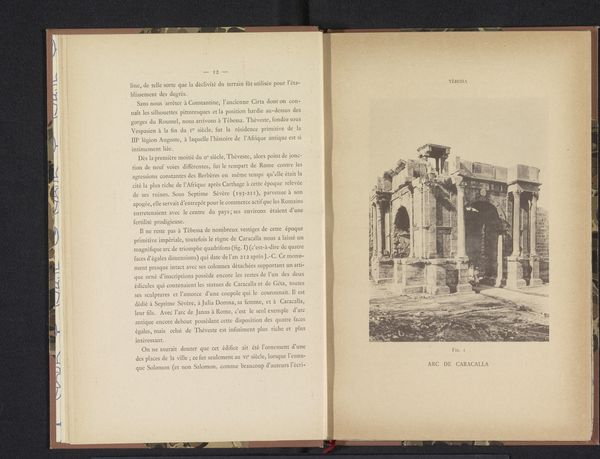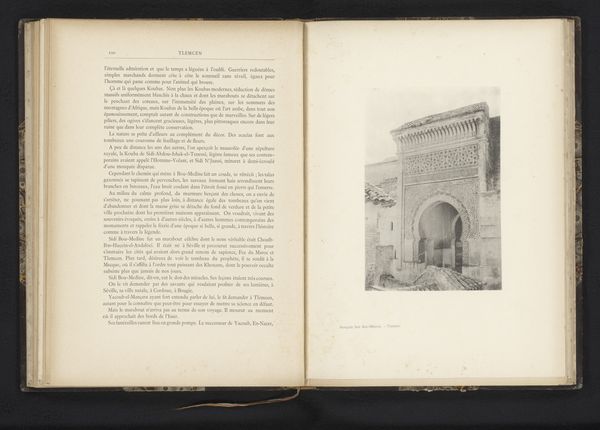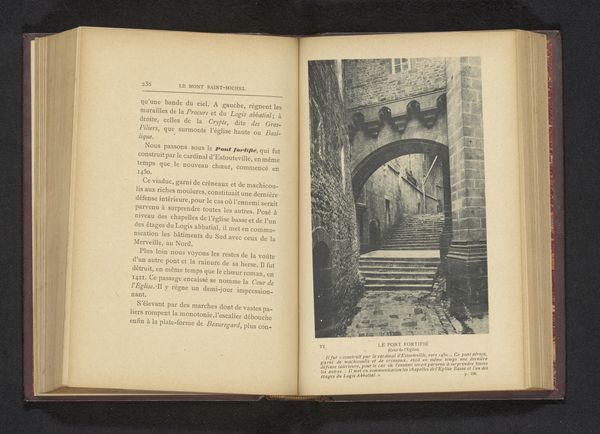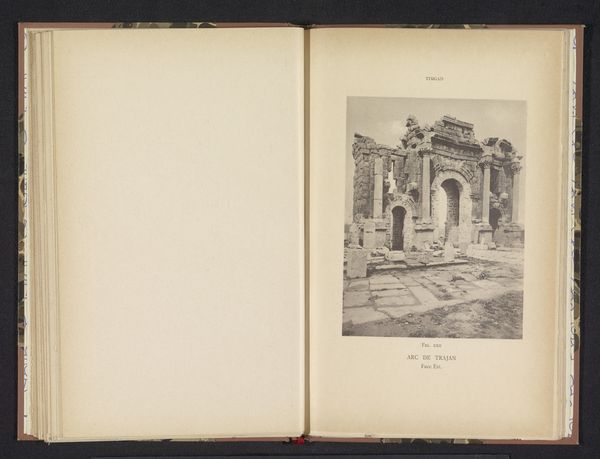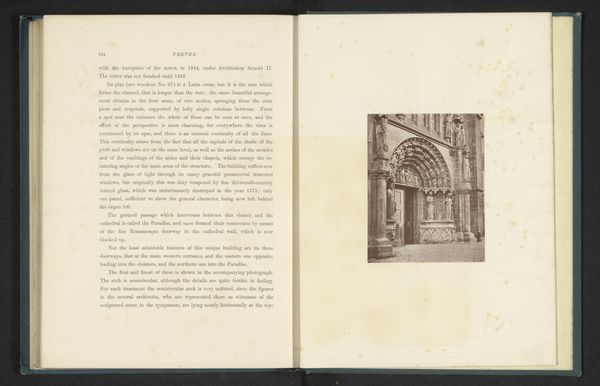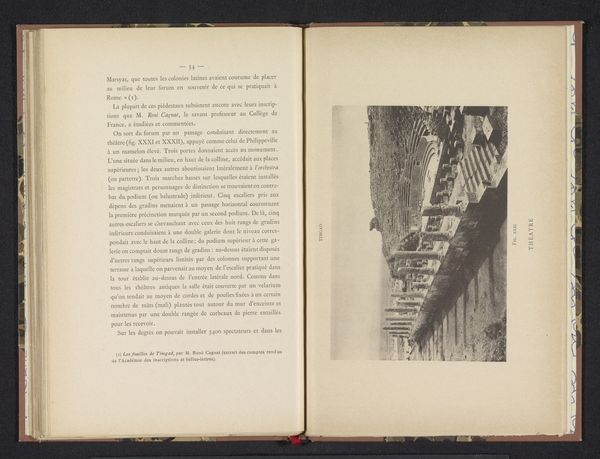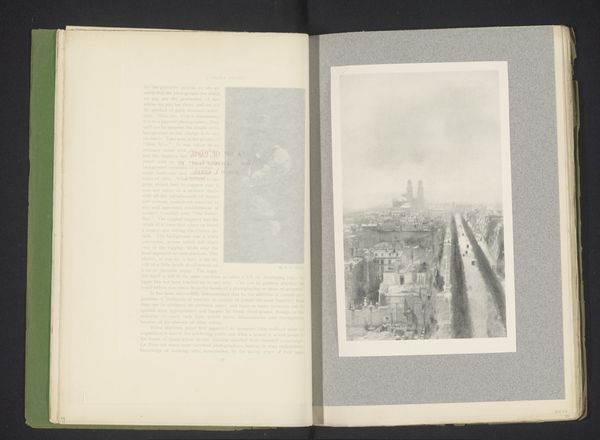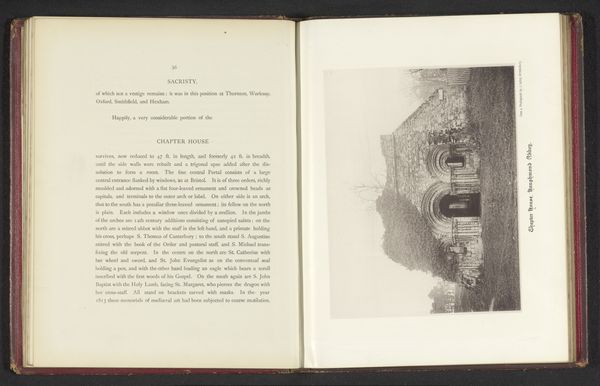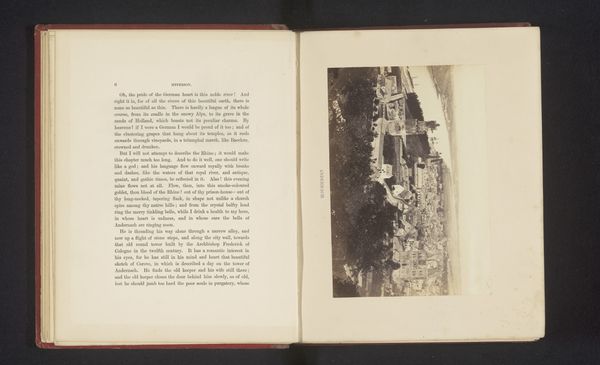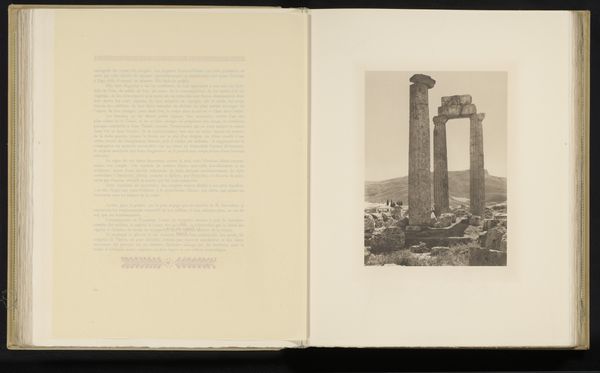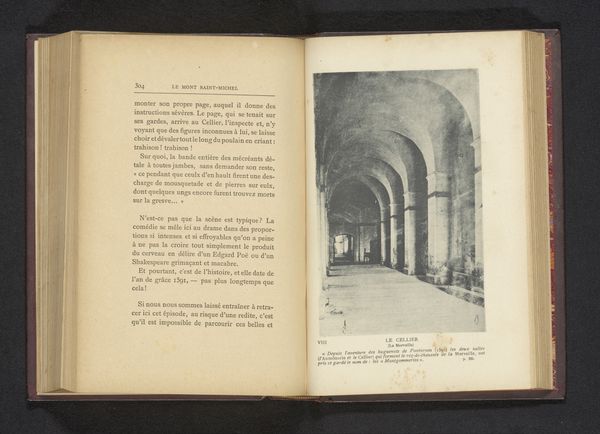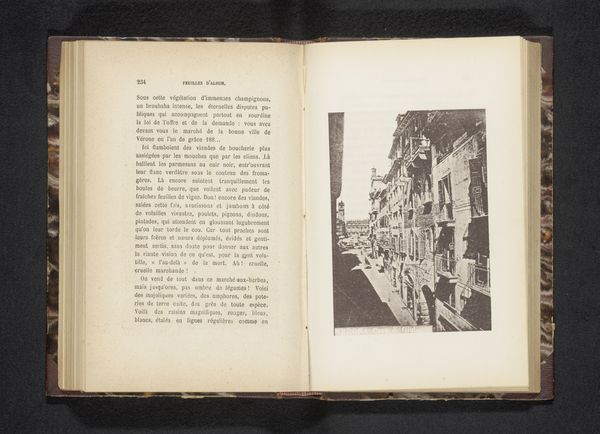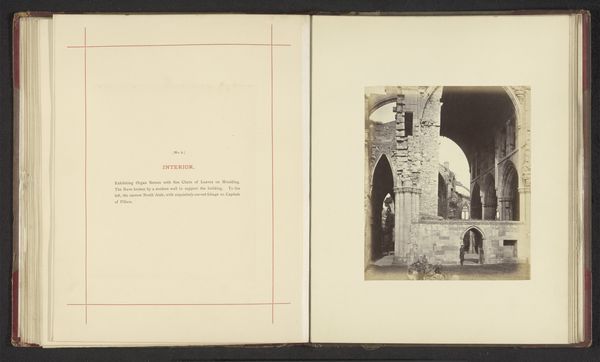
print, photography, architecture
# print
#
landscape
#
photography
#
ancient-mediterranean
#
orientalism
#
architecture
Dimensions: height 147 mm, width 110 mm
Copyright: Rijks Museum: Open Domain
Editor: So, this is "Gezicht op de ruïne van een Romeins klooster in Tébessa," a photograph taken before 1894, so it’s almost 130 years old! I find the stark contrast and decaying structure create such a melancholic mood. What strikes you when you look at this piece? Curator: The ruin depicted carries potent symbols. The arch, once a symbol of Roman power and order, is now fractured. It speaks volumes about the transience of empires. Look how light penetrates what was once solid. Notice the smaller arches further in the distance? Editor: Yes, I see the arches. They remind me of how the past repeats. Do you think the photographer was deliberately trying to make that connection? Curator: Quite possibly. Orientalism, prevalent then, often romanticized ruins to evoke a sense of the bygone and a subtle commentary on the state of current civilizations by looking at ancient power dynamics, and so this arch literally and figuratively supports our thinking of continuity between cultural memory. The decay might represent what was perceived as the fading glory, in this context, in the Orient. What feelings does that conjure for you? Editor: That's a good point. It makes me wonder if there’s a modern-day parallel we might be missing. This ruin also tells a layered story beyond just a singular perspective of decline. I now also see possibilities for transformation instead of just things crumbling to dust. Thanks! Curator: And thank you, seeing it through the fresh eyes of a student brings a new relevance that reinforces the strength of how cultural memory shapes how we perceive things in present day, after all.
Comments
No comments
Be the first to comment and join the conversation on the ultimate creative platform.
